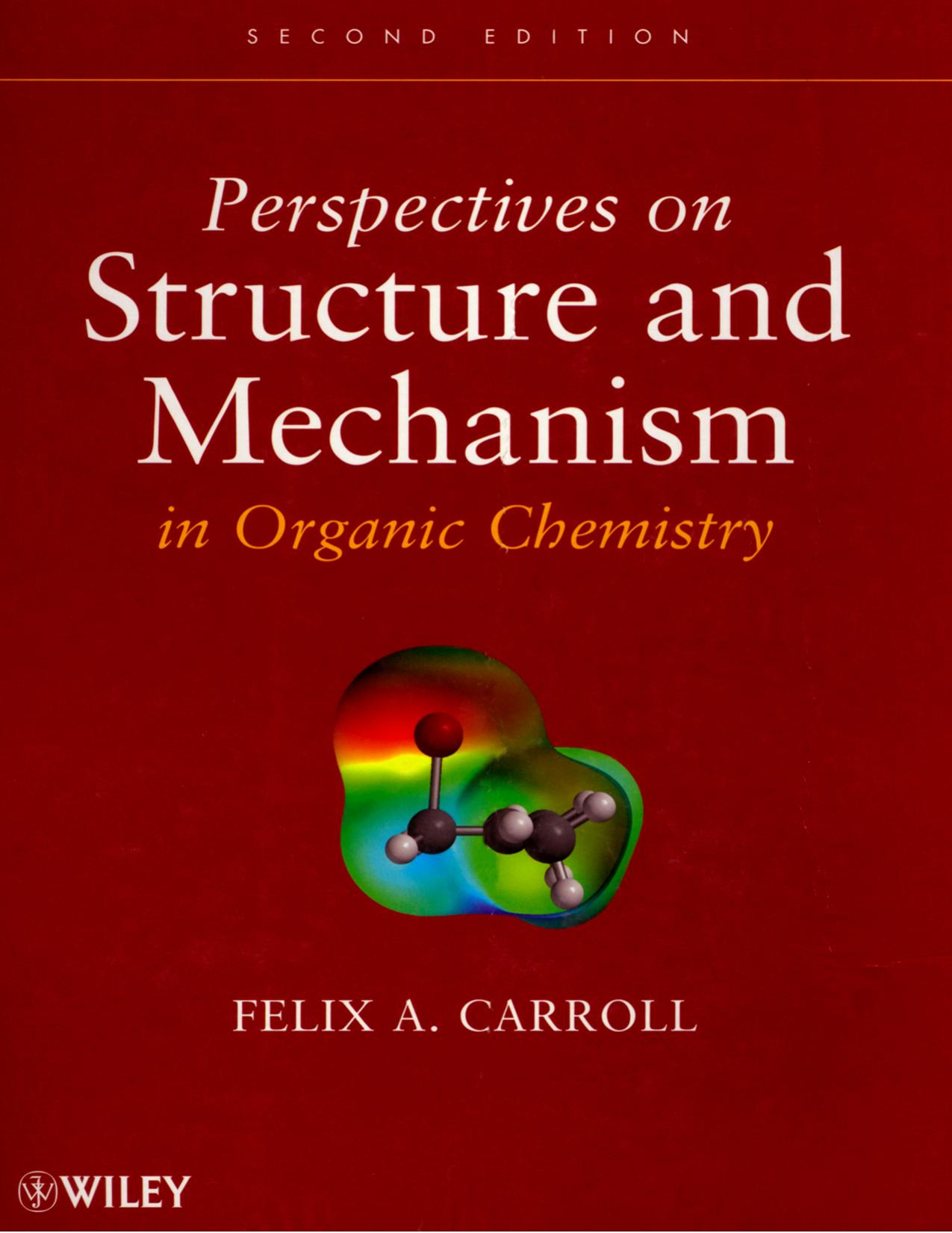Perspectives on Structure and Mechanism in Organic Chemistry by Carroll Felix A

Author:Carroll, Felix A.
Language: eng
Format: epub, pdf
Publisher: John Wiley & Sons
Published: 2011-08-23T16:00:00+00:00
The equilibrium favors the hydroxy form in the gas phase and the keto form in polar solvents. In nonpolar solvents both tautomers are present in comparable concentrations. For leading references and a theoretical study, see Wong, M. W.; Wiberg, K. B.; Frisch, M. J. J. Am. Chem. Soc. 1992, 114, 1645.
159 An exception to this generalization is the elimination of trihalomethyl anion in the haloform reaction (Figure 7.10).
160 For reviews, see (a) Euranto, E. K. in Patai, S., Ed. The Chemistry of Carboxylic Acids and Esters; Wiley-Interscience: London, 1969; pp. 505–588; (b) Koskikallio, J. in Patai, S., Ed. The Chemistry of Carboxylic Acids and Esters; Wiley-Interscience: London, 1969; pp. 103–135; (c) Kirby, A. J. in Bamford, C. H.; Tipper, C. F. H., Eds. Comprehensive Chemical Kinetics. Volume 10. Ester Formation and Hydrolysis and Related Reactions; Elsevier Publishing: Amsterdam, 1972; pp. 57–207; (d) Talbot, R. J. E. in Bamford, C. H.; Tipper, C. F. H., Eds. Comprehensive Chemical Kinetics. Volume 10. Ester Formation and Hydrolysis andRelated Reactions; Elsevier Publishing: Amsterdam, 1972; pp. 209–293.
161 According to the 1989 IUPAC Recommendations for the Representation of Reaction Mechanisms (Commission on Physical Organic Chemistry, IUPAC Pure Appl. Chem. 1989,56,23; also see Guthrie, R. D.; Jencks, W. P. Acc. Chem. Res. 1989,22,343), bond-making (association) processes are denoted A, while bond-breaking (dissociation) processes are labeled D. An electrophilic or electrofugic process at a core atom is indicated with a subscript E, and a nucleophilic or nucleofugic process at a core atom is shown with a subscript N. Subscript H indicates hydron as electrophile or electrofuge at a core atom, and subscript h indicates a hydron as electrophile or electrofuge at a peripheral atom. Stepwise processes are indicated using a plus sign (+). Using this formalism, the AAc1 mechanism is denoted as Ah + DN + AN + Dh. The AAc2 mechanism is denoted Ah + AN + AhDh + DN + Dh. The AAl1 reaction is called Ah + DN + AN + Dh.
162 Other mechanistic designations are possible. For a discussion of the B-AAc3 mechanism, for example, see Kanerva, L. T.; Euranto, E. K. J. Chem. Soc. Perkin Trans. 2 1986, 721.
163 Bender, M. L.; Ladenheim, H.; Chen, M. C. J. Am. Chem. Soc. 1961, 83, 123.
164 Figure 7.18 shows a mechanism proceeding through protonation of the carbonyl oxygen, which is generally agreed to be the predominant site of protonation of an ester. (Compare reference 160c.) Protonation of the alkyl oxygen also occurs to some extent, and an alterative mechanism involving this pathway can be written (reference 112).
165 Yates, K. Acc. Chem. Res. 1971, 4, 136.
166 To facilitate the interpretation of acid-catalyzed hydrolysis reactions, Yates defined an r value:
Download
Perspectives on Structure and Mechanism in Organic Chemistry by Carroll Felix A.pdf
This site does not store any files on its server. We only index and link to content provided by other sites. Please contact the content providers to delete copyright contents if any and email us, we'll remove relevant links or contents immediately.
Quantitative and Pattern Recognition Analyses of Five Marker Compounds in Raphani Semen using High-Performance Liquid Chromatography by Unknown(4117)
Alchemy and Alchemists by C. J. S. Thompson(3480)
The Elements by Theodore Gray(3025)
The Club by A.L. Brooks(2891)
How to Make Your Own Soap by Sally Hornsey(2865)
Drugs Unlimited by Mike Power(2564)
Wheels of Life by Anodea Judith(2115)
Cracking the LSAT, 2012 Edition by Princeton Review(1912)
Cracking the Sat French Subject Test, 2013-2014 Edition by The Princeton Review(1847)
The Flavor Matrix by James Briscione(1796)
Perfume by Jean-Claude Ellena(1795)
The Cosmic Machine: The Science That Runs Our Universe and the Story Behind It by Scott Bembenek(1740)
MCAT Physics and Math Review by Princeton Review(1657)
The Thing Around Your Neck by Chimamanda Ngozi Adichie(1637)
1000 Multiple-Choice Questions in Organic Chemistry by Organic Chemistry Academy(1637)
Cracking the SAT Premium Edition with 6 Practice Tests, 2017 by Princeton Review(1562)
Handbook of Modern Sensors by Jacob Fraden(1559)
Synchrotron Light Sources and Free-Electron Lasers by Eberhard J. Jaeschke Shaukat Khan Jochen R. Schneider & Jerome B. Hastings(1537)
A is for Arsenic: The Poisons of Agatha Christie (Bloomsbury Sigma) by Kathryn Harkup(1521)
